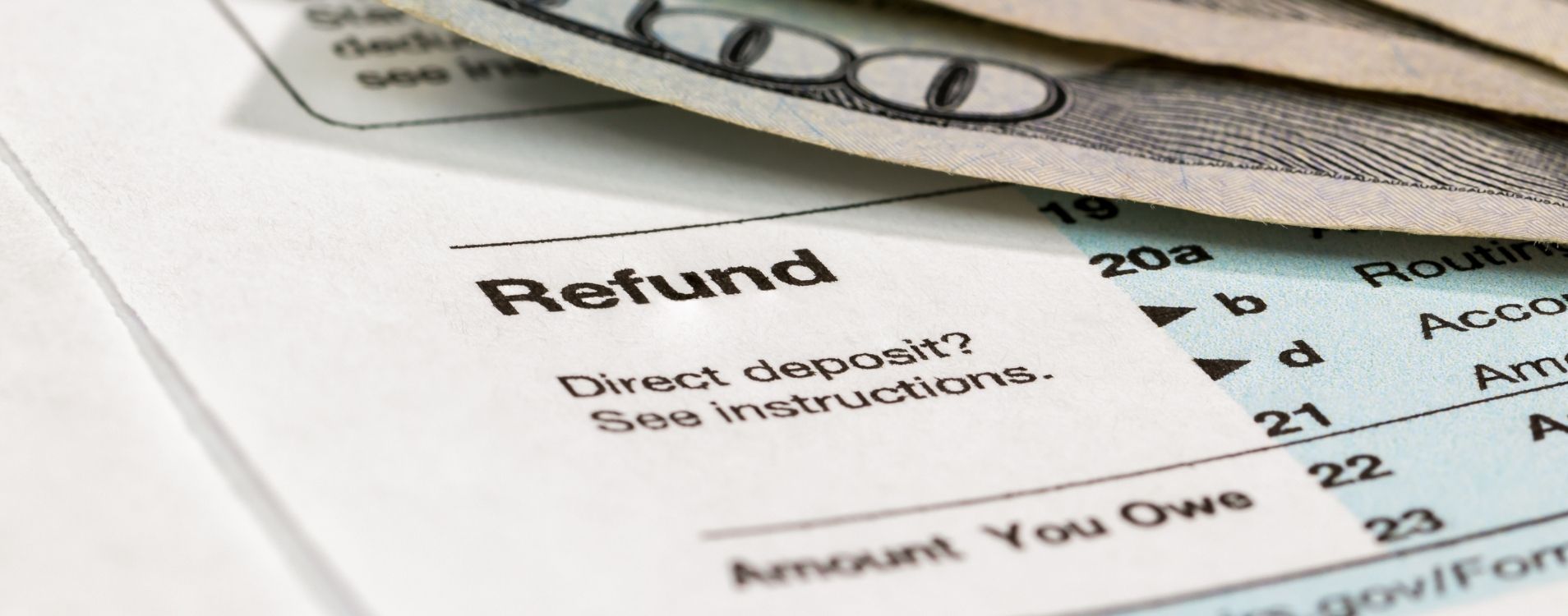Owner-Operator Taxes: A Guide For Your Trucking Business
Table of Contents |
The key to managing your taxes as a trucking owner-operator is contained in a single compound word: recordkeeping. When you keep accurate, organized financial records, you’ll find it easier to estimate quarterly tax payments. If the IRS ever comes knocking, you’ll be prepared to comply with their audit. Without a dependable recordkeeping system, you may set yourself up for an unpleasant April surprise.
If you only take one thing away from this guide to owner-operator taxes, let it be the importance of year-round recordkeeping for all your financial documents, from receipts to bank statements to invoices. In short, log, store, and organize your paperwork. Of course, you also need to know what to do with those records. This comprehensive introduction to trucking business taxes for the owner-operator has the answers.
Note: The information listed in this article is not intended as legal advice. When in doubt, it’s always best to consult with a certified tax professional.
How do owner-operators file taxes?
As an owner-operator, odds are you’ll start out with a business structure the IRS calls a sole proprietorship. That means profits from your business flow to you alone—and you’re responsible for paying taxes on those profits. As your business grows, you may decide to incorporate as a limited liability company (LLC) or even a full-fledged C or S corporation—but most owner-operators start out with a sole proprietorship. It’s usually simpler and cheaper to set up, and the structure was designed specifically for the self-employed.
If you’re used to driving for a larger carrier, becoming an owner-operator may take some adjustment. Taxes operate differently when you’re a sole proprietor. So do paychecks. You don’t earn a salary—although you can give yourself monthly guaranteed payments, as long as the cash flow allows.
Struggling with slow cash flow? Bobtail’s no-contract factoring tool gets you paid without delays. Sign up here to get started.
Understanding Estimated Tax Payments For Owner-Operators
As a self-employed driver, taxes aren’t automatically removed from your check. Instead, you have to be proactive about those payments. The IRS—and many state tax authorities—require self-employed workers who will owe $1,000 or more to file estimated quarterly taxes with four due dates throughout the year. Those due dates are typically around the middle of April, June, September, and January.
So how do you go about estimating these taxes? The IRS provides a worksheet along with its estimated tax form, 1040-ES. But a good rule of thumb is to send the IRS 25% to 35% of your net yearly income projection, broken into four equal payments. That’s quite a range, but you can use it strategically. The goal is to avoid underpayment and late payments—with their associated penalty fees—without overpaying. If you pay estimated quarterly taxes of 30% one year and end up with a large tax return, you may want to try 25% the next year. If you’re still getting a return, you may go even lower.
Speaking of end-of-year tax filings, as a sole proprietor or an LLC, you’re also required to file a Schedule C form when you complete your yearly personal tax return. This document records your business profits (or losses) and determines your exact tax liability. It’s where you’ll square your accounts and find out how close your estimates match reality.
Types Of Required Owner-Operator Taxes
Owner-operators must pay several types of taxes to the IRS. Your federal tax burden breaks down into:
- Self-employment tax. When you work for a company, that company pays an employer tax, while you pay income tax. When you’re self-employed, you’re both employer and employee, which means you must cover both sides of that tax equation. Self-employment tax breaks down into a social security tax of 12.4% in 2021 and the Medicare tax of 2.9% for that same year, for a total of 15.3%. (See the IRS’ page on Self-Employment Tax for updated tax rates.)
- Personal income tax. Your personal income tax rate is what makes universal advice about taxes untrustworthy. It changes based on your income and your filing status. For instance, in 2021, the tax rate for a single, self-employed worker was $995, plus 12% of the amount over $9,950 for annual incomes between $9,950 and $40,525 (minus deductions, of course, which we’ll cover in detail in the next section). Rates go up from there, culminating in a tax of $157,804, plus 37% of the amount over $523,600 if you make that much in a year, even with deductions. With all that variety, you pretty much have to make your own estimates—or, better yet, bring in a tax professional. There’s no one-size-fits-all recommendation on federal tax rates.
- Heavy Highway Vehicle Use Tax (HVUT). To register vehicles with a gross weight of 55,000 pounds or higher, you also need to pay the federal HVUT. This tax operates on a yearly cycle between July and June, with rolling deadlines based on the vehicle’s first month of use. Find HVUT tax due dates here, and see IRS Form 2290 for more details and filing instructions. If you lease your truck, the leasing company typically covers this tax.
In addition to these federal taxes collected by the IRS, self-employed owner-operators are responsible for a range of state and local taxes. These include:
- State income tax. Most states collect income tax, and many of them mirror the IRS requirement for estimated quarterly taxes among the self-employed. However, state taxes are a real patchwork; your best bet on planning for state taxes is to check your state’s taxing authority website. Find your state on the IRS list of state revenue sites for details on local filing requirements.
- International Fuel Tax Association (IFTA) payments. The simplest way to handle fuel taxes is through IFTA, a multi-state-associated tax authority. Once you get your IFTA license, your local IFTA base jurisdiction will send quarterly tax returns calculated with the relevant fuel tax rates; you must pay these quarterly, as well.
Finally, depending on the location of your business, you may also need to pay city or county business taxes; see your local department of revenue for details.
Tax Deductions For Owner-Operator Truck Drivers
Truck driver tax deductions reduce your tax burden in two ways: First, the money you spend on deductible expenses is already spent; it’s not part of your profit, so it’s not taxable. Second—and perhaps more powerfully—deductions may move you into a lower tax bracket. If you’re trying to decide when to make a deductible $10,000 investment into your business, consider the tax implications; maybe that investment will save you the same amount, or even more, by reducing your tax burden for the year.
Owner-operator tax write-offs include many of the expenses you incur while operating your business. So what can a truck driver deduct on taxes? Examples include:
- Per diem tax breaks. Owner-operators can deduct some portion of the price of meals and lodgings while they’re on the road—and through the end of 2022, the IRS allows drivers to deduct 100% of meal costs, up to $69 per day. Usually you can only deduct 80% of meals, so that’s quite a benefit. Just be sure to save those receipts.
- Item purchases necessary for your business. These are items like tools, gloves, and office supplies.
- Fuel and diesel exhaust fluid. Be sure to separate out fuel used for commuting to and from your truck; you can deduct this as a personal vehicle expense necessary for the job, but place it in a separate category than the fuel you use to haul loads.
- Insurance premiums. As an owner-operator, you’re required to carry multiple types of insurance for both your truck and yourself. These fixed costs are deductible.
- Retirement plans. If you pay into a retirement plan, not only are those funds deductible, they’re also tax-deferred; you won’t pay taxes on those funds until you draw on them upon retirement.
- Compliance fees. To comply with federal regulations on truck drivers, you occasionally need to produce your motor vehicle records (MVR) or a driver qualification file. You’ll also need to pay United Carrier Registration (UCR) fees. Deduct all expenses associated with these compliance tasks.
- Licensing and registration fees. If you own your truck, you’ll need to license it, which costs money—another write-off.
- Leasing costs. If you don’t own your truck, you probably lease it, and those payments are also deductible.
- Association membership fees. You may join the Owner-Operator Independent Drivers Association (OOIDA) or another trade group. Your dues are a business expense, and hence, tax deductions.
- Contracted services. Maybe you subcontract a load or two. Maybe you need a graphic designer to create a logo. When you pay contractors, write off the sum. Just remember to issue a 1099 tax form for any contractor you paid $600 or more over the course of the filing year.
- Professional services. Likewise, deduct sums you pay for lawyers, companies that specialize in tax preparation for owner-operators, and other professional services.
- Information and communication technology. Did you buy a new ELD device within the filing year? How about a phone or business computer? These expenses are write-offs, too.
- Home office square footage. If you use part of your home as an office, you can deduct a representative percentage of your rent or mortgage payments as a business expense. Learn more about the federal home office deduction here.
- Startup expenses. Your first year as an owner-operator may entail multiple startup costs, from registrations to advertising. Deduct these costs, as well.
This list is anything but comprehensive. Ultimately, what can a truck driver deduct on taxes? The general rule of thumb is that, if an expense is truly necessary to run your business, it’s a write-off on owner-operator taxes.
Tips To Minimize Taxes For Owner Operators
Take advantage of tax credits.
Deductions lower your taxable income. Credits, on the other hand, reduce your tax bill directly, and they change as Congress passes new laws designed to incentivize whatever they’re incentivizing; that means they change from year to year. It’s rare to find one that applies to an owner-operator, but check the full list of current tax credits for self-employed workers from the IRS. In the meantime, pay close attention to those deductions; they’re more consistent.
Consider the tax implications of leasing versus purchasing equipment.
A truck you own is a depreciating asset; that means you can take a multi-year deduction on the purchase. Leasing costs, on the other hand, are simple expenses. You can deduct lease payments or asset deductions plus costs of ownership (maintenance, licensing, storage, etc.). Unfortunately, you won’t know which will save you more on taxes until you sit down with a balance sheet and a calculator—and, preferably, a tax professional.
Contribute to a tax-deductible retirement account.
A few types of retirement accounts allow you to defer some taxes until you draw on saved funds. For owner-operators, these include solo 401(k)s, IRAs, and SEPs. Get details from the IRS.
Talk to a professional.
Unique tax situations require expert guidance (and every tax situation is unique). Hire a tax professional to sit down and go through your business with a fine-toothed comb; you’re likely to save more in taxes than you pay for the service.
Even if you follow all these tips, taxes can get expensive. If you find yourself short on cash flow come tax time, reach out to Bobtail: Our no-contract factoring tool provides a simple, transparent way to collect on invoices as quickly as possible. Try it today by signing up here.




